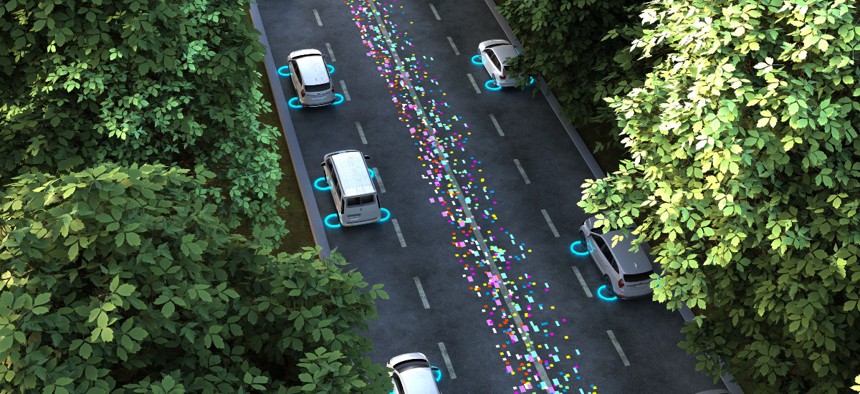Transportation Needs to Share More Info on Connected Vehicle Strategy, Watchdog Says

Huber & Starke/Getty Images
The Department of Transportation is developing ways to use less spectrum in connected vehicles, following an FCC decision.
The Department of Transportation is creating a new strategy to utilize connected vehicle technology with less spectrum, after the Federal Communications Commission reduced the allocated spectrum for this technology in 2020. However, according to a Government Accountability Office report, more information about the strategy is needed to help stakeholders appropriately plan their technology investments.
As noted in Tuesday’s report, connected vehicle technology uses wireless communication between vehicles, infrastructure and road users to exchange data through dedicated radio frequencies to allow cars to “see” around corners and avoid obstacles. According to GAO, this technology can help to reduce crashes and improve traffic. For example, connected technology can send a message that a car ahead—which is not currently visible because of an obstruction—is breaking.
Connected vehicle environments need vehicles and infrastructure with devices that are capable of sharing messages and data. But they also need radio spectrum to exchange the messages and a shared communication protocol—or “common language”—so information can be successfully exchanged. Currently, there are two communication protocols available: DSRC and C-V2X, the old and new protocol, respectively. As of September, 38 states had agencies with licenses from the FCC—which is responsible for the regulation, allocation and assignment of non-federal spectrum—to use connected vehicle technologies.
However, the FCC decreased the spectrum dedicated to this technology by 60% in 2020 in order to dedicate more for Wi-Fi and other wireless users. In response to these changes, DOT is assessing if connected vehicle technologies that use the new communications protocol can provide safety benefits under the new spectrum rules.
While DOT has shared some information about its new strategy to deploy more connected vehicle technology utilizing C-V2X, 18 out of the 23 stakeholders interviewed by GAO said that they needed more information about the strategy to effectively deploy these technologies.
For example, according to GAO, DOT should share the estimated timeframe for important steps to further connected vehicle technologies that use the new communication protocol and how to work towards national deployment, which could help lessen stakeholder uncertainty and let them figure out their next steps.
Additionally, GAO noted that DOT and other stakeholders have expressed concern that these changes could “prevent CV technologies from achieving their intended safety and other benefits.” As a result, they worry they will have to prioritize capabilities, because “it will not be possible to operate all previously envisioned CV applications in the spectrum that remains following the FCC’s decision to repurpose the spectrum.” For example, there could be interference from WI-Fi device emissions in the nearby spectrum, which could impact connected vehicle applications.
GAO recommended that DOT share more information about its strategy to help the future deployment of connected vehicles under the new spectrum rules. DOT concurred with the recommendation.






